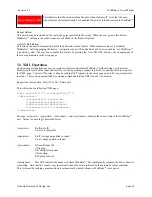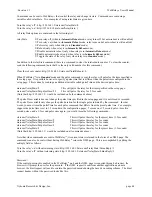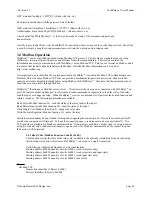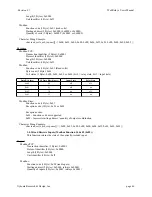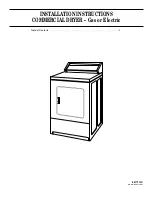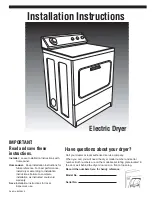
Revision 3.1
WebRelay
TM
Users Manual
Reboot Method #2: Connect WebRelay
TM
in parallel with the reset switch of the device. With this
approach, WebRelay
TM
re-boots the device by momentarily closing the reset switch. This has the
advantage of being less “hard” on the device that is being controlled than switching the power on
and off.
Reboot Method #3: Some devices have on/off switches that will remain in the on or off position
and other devices have momentary power buttons. Devices with momentary power buttons usually
will not turn on after power is applied until a user presses the power button. In this case, simply
controlling the power to the device will not work for reboot because once the device is off, it will
not come back on until the power button is pressed (even after power is restored, pressing the
button is required). WebRelay
TM
can be wired in parallel with the power button and can
momentarily close the power button to turn the device on or off.
With the above reboot methods explained, each option in the Reboot Options drop-down list will be
discussed.
-pulse off T1 secs-
This option is usually used for method #1 described above. In this case the
power to the device is wired in series with the relay. Common and Normally Open
contacts should be used. When this option is selected, WebRelay
TM
will automatically turn
on
the relay when it is first powered. The Normally Open relay contacts will be closed
and the device is powered on. When the device needs to be re-booted, the relay contacts
will be pulsed
off
for the time duration specified in T1 (see above) seconds. This option
does not use parameters T2 or T3.
-pulse on T1 secs-
This option is usually used for method #2 described above. In this case the reset
button is wired in parallel with the relay. Common and Normally Open contacts are used.
When the device needs to be re-booted, the relay will be pulsed
on
for the time duration
specified in T1 (see above) seconds. This option does not use parameters T2 or T3.
-pulse on T1 secs, off T2 secs, on T3 secs (without pp)-
This option is usually used for method #3
described above. In this case the power button is wired in parallel with the relay.
Common and Normally Open contacts are used. When the device needs to be re-booted,
the relay will be pulsed
on
for T1 (see above) seconds. After the first pulse, the relay will
stay
off
for T2 seconds, and then pulse
on
for T3 seconds. The purpose for the first pulse
(T1) is to turn the device off. Usually this requires holding the power switch for 5-10
seconds. Once the device is off, there is a delay before turning the device back on. This
delay time is specified in parameter T2. Finally the device is turned on once again by
applying a second pulse (T3) to the power switch. The second pulse usually does not need
to be as long as the first. The notation
without pp
means without power-up pulse. The
power-up pulse is explained in the next paragraph.
-pulse on T1 secs, off T2 secs, on T3 secs (with pp)-
This option is identical to the option above,
but with one exception; it pulses at power-up (
with pp
). If WebRelay
TM
loses power, it is
assumed that the device which WebRelay
TM
controls has also lost power. When the power
is restored, the device will not come back on without some help. When this reboot option
is selected, WebRelay
TM
will automatically power the device on each time power lost and
restored. It does this by waiting T2 seconds after power-up and then pulsing T3 seconds.
After the pulse to turn the device on, WebRelay
TM
will allow the device to boot and begin
its normal ping algorithm.
12. Failed Pings Before Reboot:
The device will be re-booted after this number of consecutive ping failures. This number can be set
between 1 and 255.
Xytronix Research & Design, Inc.
page 31



























